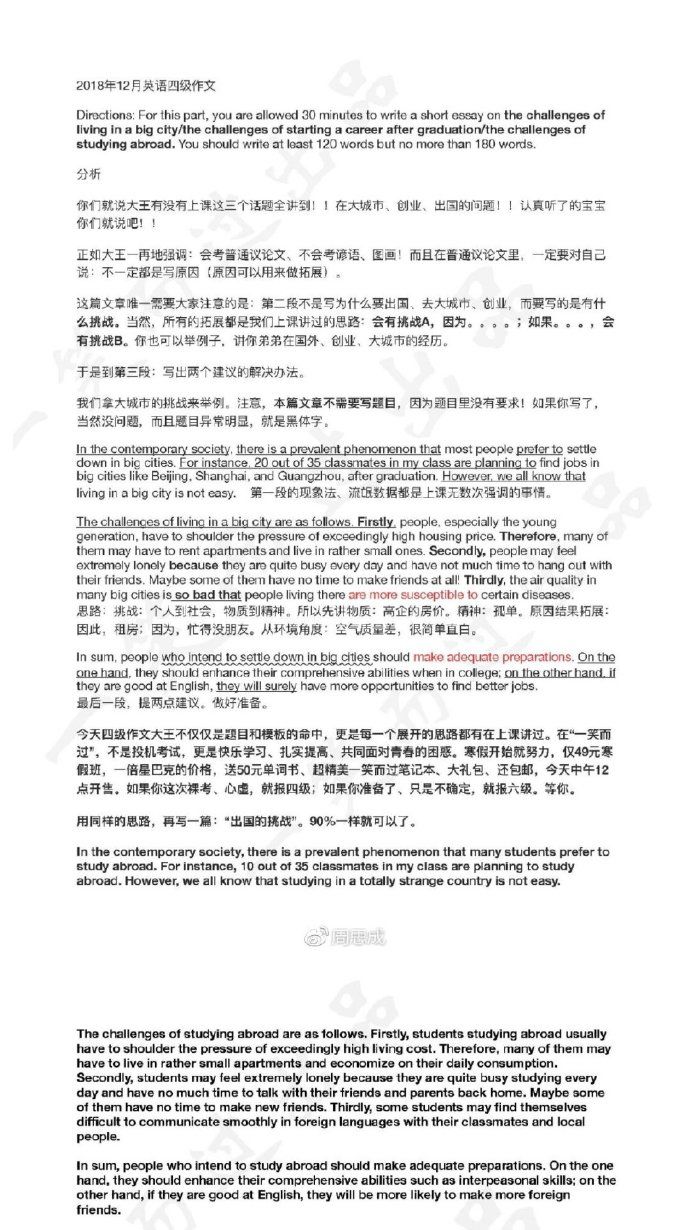LSAT模拟试题:LSAT模拟试题TEST3逻辑9
|
SECTION IV Time-35 minutes 25 Questions Directions: The questions in this section are based on the reasoning contained in brief statements or passages. For some questions, More than one of the choices could conceivably answer the question. However, You are to choose the best answer; that is the response that most accurately and completely answers the questions. You should not make assumptions that are by commonsense standards implausible, superfluous. or incompatible with the passage. After you have chosen the best answer; blacken the corresponding space on your answer sheet. 1. In 1974 the speed limit on highways in the United States was reduced to 55 miles per hour in order to save fuel. In the first 12 months after the change, the rate of highway fatalities dropped 15 percent, the sharpest one-year drop in history. Over the next 10 years, the fatality rate declined by another 25 percent. It follows that the 1974 reduction in the speed limit saved many lives. Which of the following, if true, most strengthens the argument? (A) The 1974 fuel shortage cut driving sharply for more than a year. (B) There was no decline in the rate of highway fatalities during the twelfth year following the reduction in the speed limit. (C) Since 1974 automobile manufacturers have been required by law to install lifesaving equipment, such as seat belts, in all new cars. (D) The fatality rate in highway accidents involving motorists driving faster than 55 miles per hour in much higher than in highway accidents that do not involve motorists driving at such speeds. (E) Motorists are more likely to avoid accidents by matching their speed to that of the surrounding highway traffic than by driving at faster or slower speeds. 2. Some legislators refuse to commit public funds for new scientific research if they cannot be assured that the research will contribute to the public welfare. Such a position ignores the lessons of experience. Many important contributions to the public welfare that resulted from scientific research were never predicted as potential outcomes of that research. Suppose that a scientist in the early twentieth century had applied for public funds to study molds: who would have predicted that such research would lead to the discovery of antibiotics ?one of the greatest contributions ever made to the public welfare? Which one of the following most accurately expresses the main point of the argument? (A) The committal of public funds for new scientific research will ensure that the public welfare will be enhanced. (B) If it were possible to predict the general outcome of a new scientific research effort, then legislators would not refuse to commit public funds for that effort. (C) Scientific discoveries that have contributed to the public welfare would have occurred sooner if public funds had been committed to the research that generated those discoveries. (D) In order to ensure that scientific research is directed toward contributing to the public welfare, legislators must commit public funds to new scientific research. (E) Lack of guarantees that new scientific research will contribute to the public welfare is not sufficient reason for legislators to refuse to commit public funds to new scientific research. 3. When workers do not find their assignments challenging, they become bored and so achieve less than their abilities would allow. On the other hand, when workers find their assignments too difficult, they give up and so again achieve less than what they are capable of achieving. It is, therefore, clear that no worker抯 full potential will ever be realized. Which one of the following is an error of reasoning contained in the argument? (A) mistakenly equating what is actual and what is merely possible (B) assuming without warrant that a situation allows only two possibilities (C) relying on subjective rather than objective evidence (D) confusing the coincidence of two events with a causal relation between the two (E) depending on the ambiguous use of a key term 4. Our tomato soup provides good nutrition: for instance, a warm bowl of it contains more units of vitamin C than does a serving of apricots or fresh carrots! The advertisement is misleading if which one of the following is true? (A) Few people depend exclusively on apricots and carrots to supply vitamin C to their diets. (B) A liquid can lose vitamins if it stands in contact with the air for a protracted period of time. (C) Tomato soup contains important nutrients other than vitamin C. (D) The amount of vitamin C provided by a serving of the advertised soup is less than the amount furnished by a serving of fresh strawberries. (E) Apricots and fresh carrots are widely known to be nutritious, but their contribution consists primarily in providing a large amount of vitamin A, not a large amount of vitamin C. Questions 5-6 The government provides insurance for individuals? band deposits, but requires the banks to pay the premiums for the insurance. Since it is depositors who primarily benefit from the security this insurance provides, the government should take steps to ensure that depositors who want this security bear the cost of it and thus should make depositors pay the premiums for insuring their own accounts. 5. Which one of the following principles, if established, would do most to justify drawing the conclusion of the argument on the basis of the reasons offered in its support? (A) The people who stand to benefit from an economic service should always be made to bear the costs of that service. (B) Any rational system of insurance must base the size of premiums on the degree of risk involved. (C) Government-backed security for investors, such as bank depositors, should be provided only when it does not reduce incentives for investors to make responsible investments. (D) The choice of not accepting and offered service should always be available, even if there is no charge for the service. (E) The government should avoid any actions that might alter the behavior of corporations and individuals in the market. 6. Which of the following is assumed by the argument? (A) Banks are not insured by the government against default on the loans the banks make. (B) Private insurance companies do not have the resources to provide banks or individual with deposit insurance. (C) Banks do not always cover the cost of the deposit-insurance premiums by paying depositors lower interest rates on insured deposits than the banks would on uninsured deposits. (D) The government limits the insurance protection it provides by insuring accounts up to a certain legally defined amount only. (E) The government does not allow banks to offer some kinds of accounts in which deposits are not insured. |








